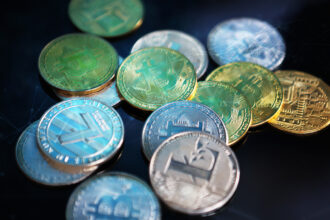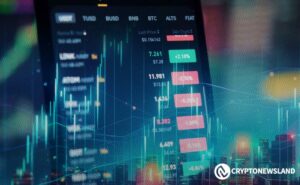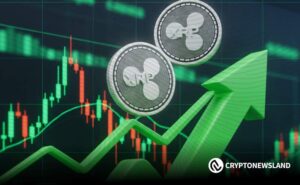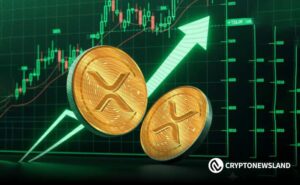How does market microstructure determine the real movement of candlestick charts?
Written by: Nik Algo
Translated by: AididiaoJP, Foresight News
Original Title: The Hidden Truth Behind Candlestick Charts
Most traders see candlestick charts.
But what I see is a vivid contest constantly unfolding between aggression and patience, liquidity and illusion.
The market microstructure is the deeper truth behind candlestick charts. It doesn’t focus on where the price is heading, but on how it gets there. This is the physics of the trading world: how orders are filled, how information leaks during execution, and how liquidity behaves under pressure.
Core Essence: Order Flow and Trading Intent
Every fluctuation on the chart is the result of a contest. On one side is passive liquidity: buy and sell orders placed by market makers, algorithms, or traders waiting for the right moment; on the other side are aggressive market orders: devouring everything in sight.
Most people see a trade and think, “Someone bought in.” But what I see is who was forced to sell. Because on a micro level, the market doesn’t move due to consensus, but because one side capitulates.
When the aggressive side keeps attacking and liquidity isn’t replenished in time, that’s when the order book starts to “breathe.” You can clearly feel the moment the market shifts from passive absorption to active force, from defense to offense. This is the real-time operation of microstructure.
Liquidity: Real or Market Mirage?
Liquidity is not the same as trading volume; it is the embodiment of market confidence.
When volatility is low, liquidity providers narrow spreads and hold their ground. But when pressure hits, the same liquidity evaporates like morning mist under the scorching sun. The once-thick order book becomes fragile, and the surface balance quickly collapses into panic.
I have witnessed massive orders being lured, canceled, and replenished by spoofing in milliseconds, only to vanish in the end. True liquidity is not the numbers shown in the order book, but the part that stands firm under stress.
Information: Every Trade Tells a Story
Every trade tells a story, but not every story is worth listening to.
Some trades are just market noise: asset rebalancing, hedging, or bots wash trading for rebates. Others are key signals: informed traders quietly positioning before volatility spikes. The real skill lies in distinguishing between the two.
When I observe capital flows, I’m not reading cold numbers, but the market’s reactions. How does the market respond to pressure? Are sellers punished or rewarded? Are buyers chasing the rally or calmly absorbing? Microstructure is the language through which the market expresses intent amid uncertainty.
Price Formation: A Contest, Not a Compass
Price is not truth; it is a temporary consensus reached under market tension.
On a micro level, price is formed through the contest between buyers and sellers. The stronger side doesn’t necessarily have more conviction, but can outlast the other’s liquidity. Reflexivity dominates here: when liquidity is thin, volatility amplifies; when liquidity is abundant, the market stagnates.
Understanding microstructure means perceiving when the system becomes fragile, not predicting its next move.
The Human Element: Humanity in Algorithmic Trading
Even in algorithm-dominated markets, humanity is everywhere. You can sense fear in the speed of order cancellations, read greed in densely stacked buy orders, and feel exhaustion in the post-liquidation chop.
Behind the screen, large-scale market psychology is at work. Spoofers bluff like poker masters; momentum chasers are adrenaline addicts; market makers are like chess grandmasters, cautiously guarding their territory.
This is the human side of microstructure—the invisible pulse that gives every price tick a touch of humanity.
Beyond Theoretical Boundaries
Academia defines market microstructure as “the study of the process and outcomes of exchanging assets under specific trading rules.”
The definition is accurate, but lacks vitality.
For traders in the thick of it, microstructure is the anatomy of aggression, fear, and liquidity under real-time pressure. It is the real battlefield behind every candlestick.
Top traders don’t just see charts; they sense the buildup of pressure before it appears. They know the market is not a place for price discovery, but for combat. Every trade is a scar, every pause a gasp for breath.
Market microstructure is not theory; it is everything that happens before theory fails.
Disclaimer: The content of this article solely reflects the author's opinion and does not represent the platform in any capacity. This article is not intended to serve as a reference for making investment decisions.
You may also like
French Banking Titan Launches Groundbreaking Stablecoin Tied to the Euro
In Brief ODDO BHF launches Euro-pegged stablecoin EUROD on Bit2Me for broad market access. EUROD aligns with E.U.'s MiCA framework, enhancing trust with bank support. EUROD aims to fill corporate demand and diversify currency in a dollar-dominated arena.

Top 3 Altcoins Set for Huge Gains — Buy Before the Next Rally

XRP Tests Critical $2.21 Level While Oversold RSI Suggests Possible Short-Term Reboun

XRP Liquidity Map Highlights Major $3.6 Cluster as Price Holds Above Support

